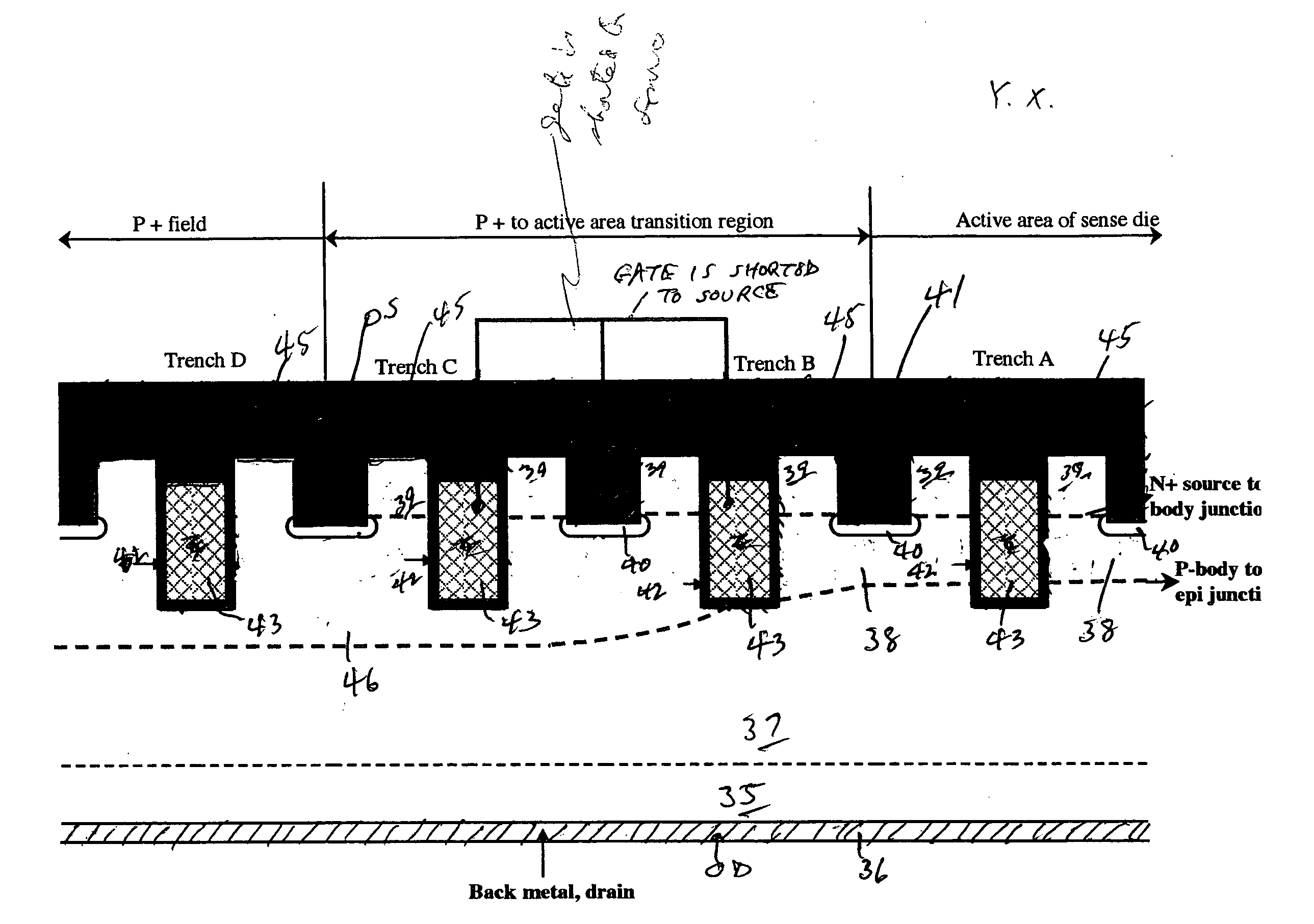Current sense trench type MOSFET with improved accuracy and ESD withstand capability
a trench type, mosfet technology, applied in electrical devices, semiconductor devices, instruments, etc., can solve the problems of reducing the cell pitch, reducing difficult to produce current sensing mosfets with low sense ratio variation, etc., to reduce the yield of current sensing mosfet wafers, reduce the sense ratio variation, and reduce the cell pitch. , the effect of low cell pitch
- Summary
- Abstract
- Description
- Claims
- Application Information
AI Technical Summary
Benefits of technology
Problems solved by technology
Method used
Image
Examples
Embodiment Construction
[0038]FIG. 1a is a top view of a prior art sense die design 20. The sense die is shown as an N channel device, but it is to be understood that it can be a P channel device with all conductivity types reversed from those described. The active area 25 of the sense die 20 is isolated from the main FET by a P+ region 21 defined by the P+ mask 22 of FIG. 1b. The P+ mask 22 defines an open area 23 in the field oxide for boron implantation. The P+ mask has a certain overlap with the active mask 24 (FIG. 1c) that defines the open area for channel and source implantation. The active area 25 of the sense die 20 is inside the active mask 24. The periphery of active area 25 constitutes the transition from active area to the P+ field 21.
[0039] In the example shown in FIG. 1a, trench A FIG. 1d is located at the active area 25, trenches B and C are located at the transition region from active area 25 to the P+ field 21, and trench D is located at the P+ field 21 without overlap with the active ma...
PUM
| Property | Measurement | Unit |
|---|---|---|
| active area | aaaaa | aaaaa |
| area | aaaaa | aaaaa |
| area | aaaaa | aaaaa |
Abstract
Description
Claims
Application Information
 Login to View More
Login to View More - R&D
- Intellectual Property
- Life Sciences
- Materials
- Tech Scout
- Unparalleled Data Quality
- Higher Quality Content
- 60% Fewer Hallucinations
Browse by: Latest US Patents, China's latest patents, Technical Efficacy Thesaurus, Application Domain, Technology Topic, Popular Technical Reports.
© 2025 PatSnap. All rights reserved.Legal|Privacy policy|Modern Slavery Act Transparency Statement|Sitemap|About US| Contact US: help@patsnap.com



